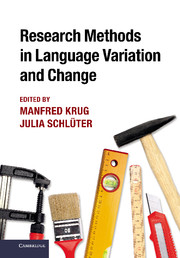19 - Elementary statistical testing with R
Published online by Cambridge University Press: 05 June 2014
Summary
Introduction
In Brian Joseph's final editorial as the editor of what many see as the flagship journal of the discipline, Language, he commented on recent developments in the field. One of the recent developments he has seen happening is the following:
Linguistics has always had a numerical and mathematical side . . . but the use of quantitative methods, and, relatedly, formalizations and modeling, seems to be ever on the increase; rare is the paper that does not report on some statistical analysis of relevant data or offer some model of the problem at hand.
(Joseph 2008: 687)For several reasons, this appears to be a development for the better. First, it situates the field of linguistics more firmly in the domains of social sciences and cognitive science to which, I think, it belongs. Other fields in the social sciences and in cognitive science – psychology, sociology, computer science, to name but a few – have long recognized the power of quantitative methods for their respective fields of study, and since linguists deal with phenomena just as multifactorial and interrelated as scholars in these disciplines, it was time we also began to use the tools that have been so useful in neighboring disciplines.
Second, the quantitative study of phenomena affords us with a higher degree of comparability, objectivity, and replicability. Consider the following slightly edited statement:
there is at best a very slight increase in the first four decades, then a small but clear increase in the next three decades, followed by a very large increase in the last two decades (this chapter, cf. below Section 2.4).
Information
- Type
- Chapter
- Information
- Research Methods in Language Variation and Change , pp. 361 - 381Publisher: Cambridge University PressPrint publication year: 2013
References
Accessibility standard: Unknown
Why this information is here
This section outlines the accessibility features of this content - including support for screen readers, full keyboard navigation and high-contrast display options. This may not be relevant for you.Accessibility Information
- 9
- Cited by
